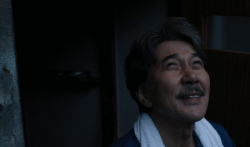Human life is carried out on diverse backdrops. However, in the drama and hustle of it all, rarely do we get the chance to step back and appreciate these landscapes. A stroll over to the Illuminated Landscapes exhibit at the Pepco Edison Place Gallery on 8th and G Streets allows one to do just that for free.
The exhibit showcases the work of the Washington Society of Landscape Painters, a group of painters in the greater D.C. area that has strived since 1913 to keep 19th-century painting techniques alive, hosting annual “paintouts” in the great outdoors, or en plein air, as francophilic society members might say.
The exhibit is decidedly diverse. The paintings cover a range of styles, from realism to impressionism, and stretch over an even wider range of subjects. Some are familiar cityscapes, like Richard Whiteley’s “C&O Canal at Georgetown,” while others are pastoral stretches of countryside, like Daniel Wise’s “Dusk,” a throwback to Monet’s iconic haystacks. A majority of the paintings are from the mid-Atlantic region, but the exhibit does an impressive job highlighting the region’s diversity. Andrei Kushnir’s “Potomac River from Plummers Island” has an exotic, almost Amazonian feel, and the crashing waves in Christine Lashley’s “Silver Sea” capturethe essence of a mythical sea serpent’s abode.
But when it comes to talent, the gallery is anything but consistent. Some of the painters masterfully execute technique. Others merely give it their best shot.
If by some chance you feel the inescapable urge to own one of these works of art, prices vary from $300 to $15,000. And yes, nearly every landscape featured has its price, for Illuminated Landscapes is just as much a sale as it is an exhibit. The only criterion for inclusion appears to be membership in the society, and each artist’s work is displayed in isolated clumps along the gallery walls. Like at a used car dealership, prices are displayed prominently.
Ironically enough, the landscapes were actually very awkwardly illuminated. Gallery lights created distracting glares and casted obtrusive shadows on the works, hindering their presentation. Each artist appears to have selected the frames for his or her own paintings, further detracting from any semblance of cohesiveness the exhibit may have intended to create.
The gallery is small—roughly 1,200 square feet—and odds are you won’t need to spend much time observing the paintings. Some of the techniques are impressive, but there is nothing really new here. Aside from the odd TV-satellite or modern grain silo in the background, the painters aim shamelessly to replicate Monet or Van Gogh or Brueghel. Although some of these attempts are admirable, you are probably better off seeing the real thing in a more ideal setting at the National Gallery just a few blocks away. Or better yet, step outside and experience real landscapes illuminated by the springtime sun.





Based on his comments, this reviewer has a problem with creditability.
“But when it comes to talent, the gallery is anything but consistent. Some of the painters masterfully execute technique. Others merely give it their best shot. If by some chance you feel the inescapable urge to own one of these works of art, prices vary from $300 to $15,000.”
Well, yeah. There is diversity in this organization. Is the reviewer saying that the prices should all be the same?
“And yes, nearly every landscape featured has its price, for Illuminated Landscapes is just as much a sale as it is an exhibit. The only criterion for inclusion appears to be membership in the society, and each artist’s work is displayed in isolated clumps along the gallery walls. Like at a used car dealership, prices are displayed prominently.”
Is the reviewer an artist or a critic? Has he ever tried to sell a painting or a piece of prose?
“a group of painters in the greater D.C. area that has strived since 1913 to keep 19th-century painting techniques alive, hosting annual “paintouts” in the great outdoors, or en plein air, as francophilic society members might say.”
The reviewer is obviously not familiar with current Plein Air events in California and in such diverse locations as Maine, Rhode Island, Connecticut, Massachusetts, New York, Pennsylvania, Delaware, Maryland, Virginia and many points south (check out Charleston). Why in the world would a newspaper pay him to comment on current art?
“Ironically enough, the landscapes were actually very awkwardly illuminated. Gallery lights created distracting glares and casted obtrusive shadows on the works, hindering their presentation. Each artist appears to have selected the frames for his or her own paintings, further detracting from any semblance of cohesiveness the exhibit may have intended to create.”
Perhaps he is only familiar with shows in museums. If so, I believe he is unqualified to comment on work by working artists, currently making a living producing art.
Again, the reviewer has no understanding of the working artist. Artists chose the frame as it is part of the presentation.
“…there is nothing really new here. Aside from the odd TV-satellite or modern grain silo in the background, the painters aim shamelessly to replicate Monet or Van Gogh or Brueghel.”
Oh, gosh. The reviewer through out some names he thought the WSLP painters were replicating. Van Gogh and Brueghel were in no way “plein air”. He did not mention a single name of a current, live plein air painter that NOW commands prices that exceed what the Dutch Masters received when they were alive.
“Although some of these attempts are admirable, you are probably better off seeing the real thing in a more ideal setting at the National Gallery just a few blocks away. Or better yet, step outside and experience real landscapes illuminated by the springtime sun.”
All I can say is “Please step outside and see if you can buy the scenes presented at the WSLP show at the Edison Gallery.” If you would like to decorate your house, try to buy “the real thing in a more ideal setting at the National Gallery just a few blocks away.”
I think non-painting critics, who are only familiar with museum displays, are the bane of the art industry.